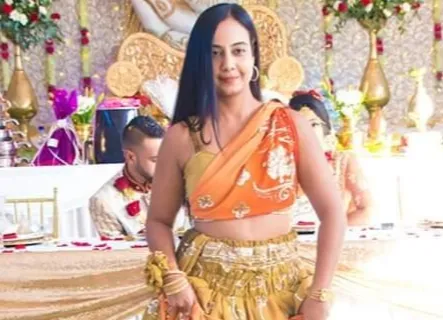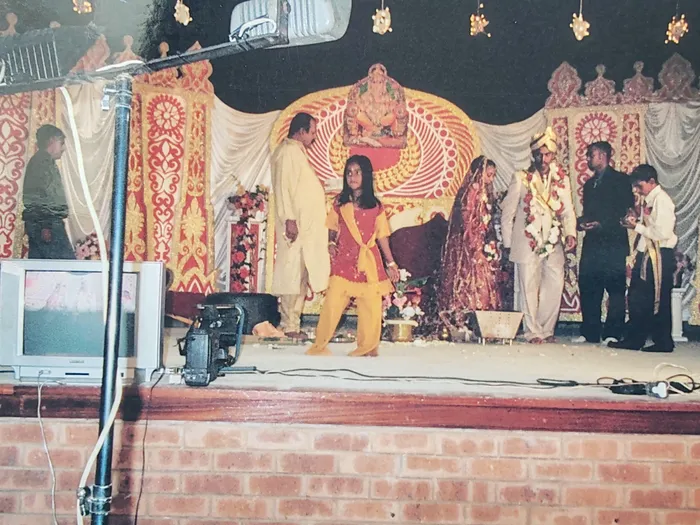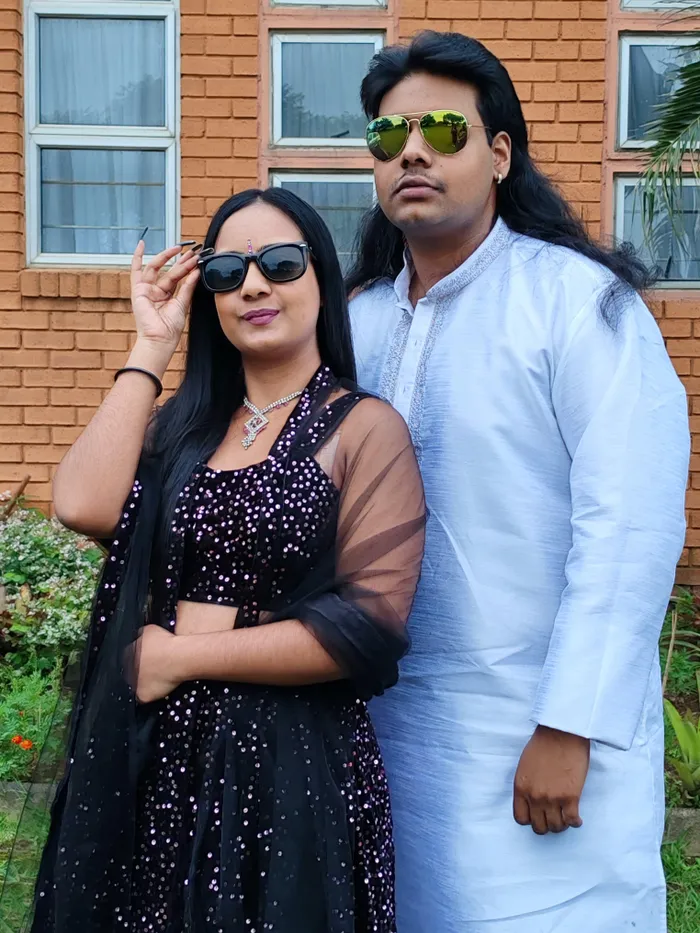Embracing body positivity: Preshina Ramsunker’s journey as a belly dancer
From TikTok to the stage

Preshina Ramsunker
Image: Supplied
WITH 130 000 followers and more than 2.7 million likes on TikTok, Phoenix belly dancer Preshina Ramsunker is standing strong, breaking stereotypes and promoting body positivity.
The 27-year-old online teacher often posts dance content at home or on stage, either alone or with her younger brother. Some of the videos have also delved into their personal lives.
Ramsunker, who studied human resource management and industrial psychology, said thanks to TikTok’s algorithm, her videos have been widely circulated, and that had helped her get a lot of gigs.
“What I really love about the platform is that it gives people with talent, especially those who are often overlooked or don’t have many opportunities, a real chance to shine. In the entertainment world, artists are often exploited with promises like ‘you will get exposure,’ but honestly, that exposure rarely leads to anything real. With TikTok, I feel like my content reaches the right people and opens doors for genuine opportunities,” said Ramsunker.

Performing onstage as a child.
Image: Supplied
Her journey in dance, she said, started around age five.
“I vividly remember putting on skirts, dancing on the bed, or in front of the mirror completely lost in the music. My immediate and extended family always loved dancing, especially to Bollywood music. At every family gathering, it was always, dance, and so we had these fun little family dance-offs.
“It was never professional, but it definitely sparked something in me. I was always dancing to Kaanta Laga even in primary school and mimicking Bollywood item numbers straight from the TV. That’s how I learned most of what I know. Then, one day, Shakira released Hips Don’t Lie and everything changed.
“I was about 10 years old and completely mesmerised by her hip movement (maya). I kept watching and trying until I got it right before I knew it. That’s when I realised my hips were naturally flexible, and I began exploring more hip movements. I experimented with basic hip-hop but it didn’t feel like me. Then one day, I saw a newspaper advert for belly dance classes.
“I was immediately drawn to the imagery of the desert, the intricate costumes, and the mysterious veils. I asked my mom what belly dance was, and after her explanation, I started watching and downloading Arabic music, even though I didn’t know how to dance to it properly just yet.
“Everything changed when I discovered Sadie Marquardt on YouTube at 13 years old. I saw her belly dance and immediately said, ‘This is for me’. That night, I did 16 belly dance tutorials back-to-back. The next morning, I danced to a tabla track and suddenly it all clicked. I fell in love with the music, the feminine energy, and the grace.
“At a family braai, I performed a routine and shocked my uncles and aunts. They couldn’t believe how I danced like that. From then on, I trained myself whenever I could. But the truth is: the learning never really stops.”
She performed at family functions and community events, while growing up.
“My parents always encouraged me. They never held me back. I danced at so many family events like engagements and weddings that I have honestly lost count.”
While she was not confident as a child, her dance moves were always bold.
“Dancing, especially belly dancing, helped me feel confident. It’s not just a dance, it’s a part of who you are, and it makes you appreciate and love yourself more.”
In addition to belly dance, the self-taught dancer specialises in Bollywood and modern South Indian dance.
Through her journey she has tried to broaden and create open-mindness.
“I have been trying to get people in Durban to appreciate belly dance since I was in high school. For a long time, I felt out of place, like I had this beautiful gift, but it was being wasted because people were so narrow-minded.
“Back then many people saw belly dance as something cheap or overly seductive and it was frustrating. That started to change when the song Dilbar came out in 2018. Nora Fatehi mesmerised the world with her performance and it really shifted people’s perception of belly dance.
“I started to notice a change, especially in the Indian community. More people began to see it for what it really is: a cultural, artistic, and powerful form of expression. That moment helped me get more bookings and opened more doors.
“Today, belly dance has become more popular at Indian events. People are fascinated by the way a dancer moves to the rhythm, especially the precision of the hip and stomach movements. Some of the more well-travelled or wealthier folks understand its cultural value and appreciate how exclusive and elegant it can be.
“As for stamina, when I hear the beat, it flows through me. Every move I do, I feel it in my body. That connection is what fuels my performance. I actually rarely practice. It’s the rhythm and emotion of the music that drives me on stage.
“Another ‘taboo’ I have broken is dancing publicly and on TikTok with a bigger body. A lot of people still believe you have to be thin to belly dance, which is false. In fact, the dance celebrates curves and femininity.
“Body positivity is everything to me. As a plus-size Indian woman in a judgemental society, I’ve had to fight to take up space on camera, on stage, and in life. I dance not to fit in, but to stand out. I show up in my body, belly and all, to remind other women that beauty isn’t one size, one shape, or one look. Body positivity isn’t just a movement, it’s my rebellion, my freedom, and my power.”
She said movements like hip whining, which are popular in Caribbean culture, and twerking were often looked down on, especially for an Indian woman.
“But I don't let that stop me. These moves are powerful and not easy to master and if I love them, I will keep doing them.
“Right now I am also learning Tahitian dance from the island of Tahiti. It involves fast, grounded hip movements, rapid shaking and controlled isolations that require strong lower-body control. It’s beautiful and challenging, and I’m excited to keep growing with it.”
Videos also feature her brother, Rohan, 22, a freight manager, who goes by the stage name, Govinda.

With her brother Rohan.
Image: Supplied
“We have been dancing together since we were little. At some point, he took a break from dancing but I continued. Despite that, we have always shared a close relationship. He also loves cooking, so he always makes my favourite food, and he takes me anywhere I need to go.
“I was the one who started posting dance content first. For years, I kept asking him to dance with me and eventually he agreed. One of our very first videos together, which was filmed at a gig, I almost didn’t attend because I wasn’t feeling well and it ended up garnering over 500 000 views.
“That video put us on the map. It was also during a difficult time right after our house had burned down, so creating those videos together became a fun escape and a source of healing. From there, our popularity grew. People began to recognise us as ‘the dancing brother and sister’.
“We started doing more videos, performed together at gigs, and created a fun series where we played characters called Nani and Nana, based on our real grandparents. At the moment, our nani is the only grandparent we have with us, and we love her unconditionally. Making those skits was a blast.
“I wouldn’t say my brother followed in my footsteps, though. I gained more exposure and followers through him. People were drawn to his dance style, and his hair was a big talking point at the time.”
Her trendy outfits, she said, were either purchased online or her grandmother made them.
“She loves creating beautiful, bold looks that celebrate who I am and every stitch carries her love and legacy. There’s nothing trendier than wearing something made just for you.”
Her aim is to now push her dance content to the next level, collaborate with fearless creators, and break the mindset barriers in the Indian community.
“I’m working on content that blends cultural richness with bold self-expression, something you don’t often see from plus-size women. My dream is to build a platform that not only entertains, but empowers. I am not just chasing numbers, I am chasing impact.”
Related Topics: